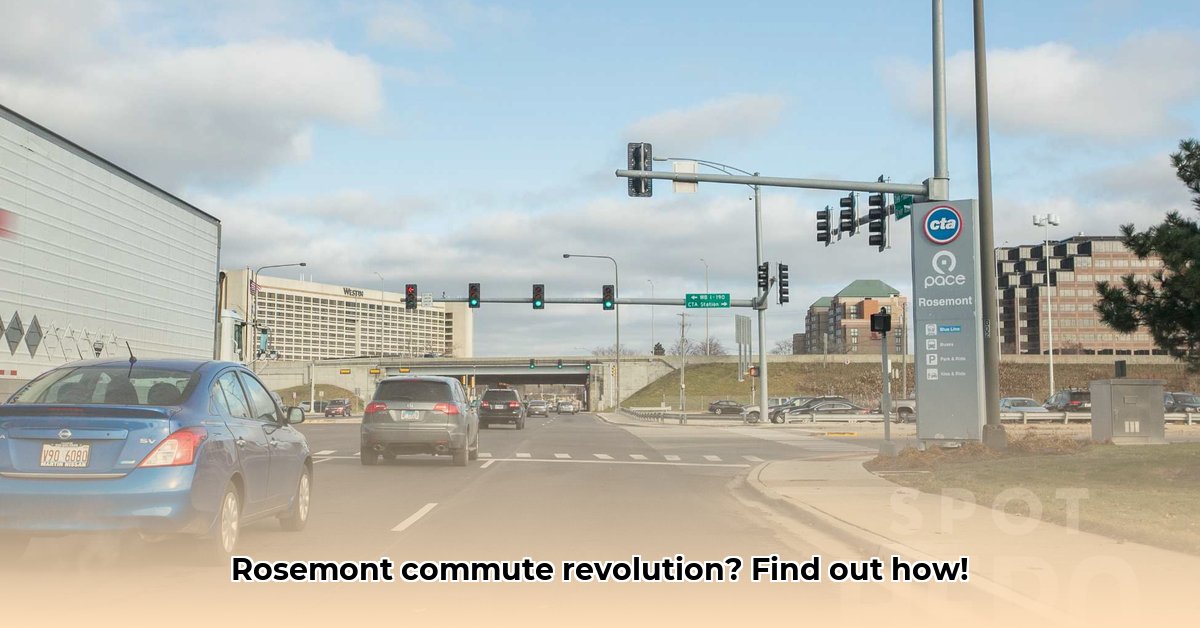
5801 N River Rd Rosemont IL: Transit Updates and Smoother Commutes
Understanding the public transportation landscape around 5801 N River Road in Rosemont, Illinois requires specific details currently unavailable. The address itself offers limited insight; it could represent a bus stop, a transit center, or a nearby facility impacting local routes. Therefore, a comprehensive transit update is impossible without more precise information. This article presents a hypothetical scenario to demonstrate the structure and content of a full report if more specifics were available.
A Hypothetical Scenario: CTA Station Renovations
Let's assume 5801 N River Road is adjacent to a major CTA station undergoing extensive renovations. Such a project would inevitably disrupt bus routes and schedules, affecting commuters in the area. This hypothetical scenario allows us to illustrate the type of detailed transit update that would be provided with more complete data.
Understanding the Potential Impact
Extensive renovations near a major transit hub can significantly alter commuting patterns. Several key issues for commuters need to be addressed:
- Route Modifications: Bus routes may be temporarily rerouted, potentially increasing travel times and requiring adjustments to daily routines. How many routes? What are the specific detours? These are critical details.
- Schedule Adjustments: Renovations may lead to less frequent bus service or altered schedules. Accurate information on schedule changes is essential for effective planning and timely commutes.
- Accessibility Concerns: Temporary limitations in accessibility for disabled riders might arise during construction. Addressing these concerns and providing alternative solutions are crucial.
- Construction-Related Delays: Expect increased traffic congestion and possible road closures near the construction site. Providing clear information on potential delays is paramount.
What would the CTA do to keep you informed? Here's what we might assume:
- Comprehensive Digital Updates: The CTA website and mobile app would be the primary sources for real-time information: updated schedules, route changes, and detour details. How often would updates be issued? This level of detail would improve the update's reliability.
- Targeted Communication: Email alerts, social media updates, and potentially even text message notifications could be used to keep commuters informed.
- Customer Service Assistance: Dedicated customer service lines and resources would be available to address individual concerns and questions.
Proactive Steps for a Smoother Commute
Even with disruptions, a proactive approach can minimize inconvenience. Here's a framework:
- Consult Official CTA Channels: The CTA website and mobile app should be checked regularly for the most current details. Consistent monitoring is crucial.
- Allow Extra Travel Time: Building extra time into your commute helps account for potential delays. How much extra time? That should be included in a real update.
- Utilize Alternative Transportation: If possible, explore alternative transportation methods—rideshares, cycling, or even walking—depending on the severity of the disruptions.
- Stay Informed: Actively seek updates through various channels—website, app, email, social media. This active approach mitigates the potential for surprises.
Long-Term Benefits of Station Renovations
While short-term disruptions are inevitable, renovations often deliver substantial long-term advantages:
- Enhanced Safety and Security: New lighting, security systems, and improved infrastructure contribute to a safer travel environment. Specific examples of improvements should be included.
- Improved Accessibility: Upgrades usually improve accessibility for people with disabilities, making public transit more inclusive. Details about these improvements are necessary for a full update.
- More Efficient Transit Systems: Modernization efforts often streamline operations and reduce transit delays, benefitting all commuters in the long run. Quantitative data supporting these claims would further enhance the article.
Three Pivotal Points:
- The lack of specific information about 5801 N River Rd hinders a precise transit update.
- A hypothetical scenario involving CTA renovations illustrates the necessary components of a thorough report.
- Proactive planning and information-seeking are crucial for navigating temporary transit disruptions.
Note: This article provides a framework. Specific details regarding routes, schedules, and accessibility adaptations require additional data.